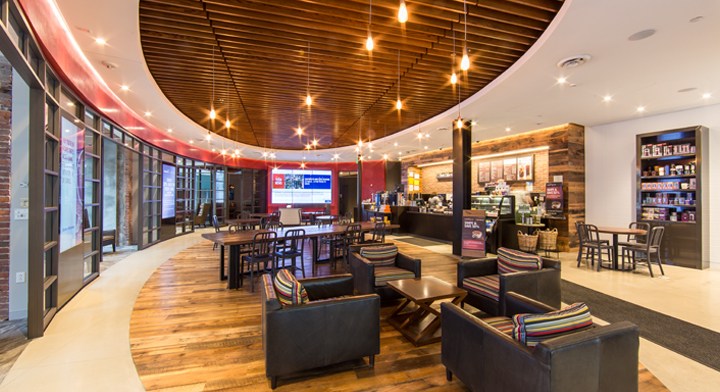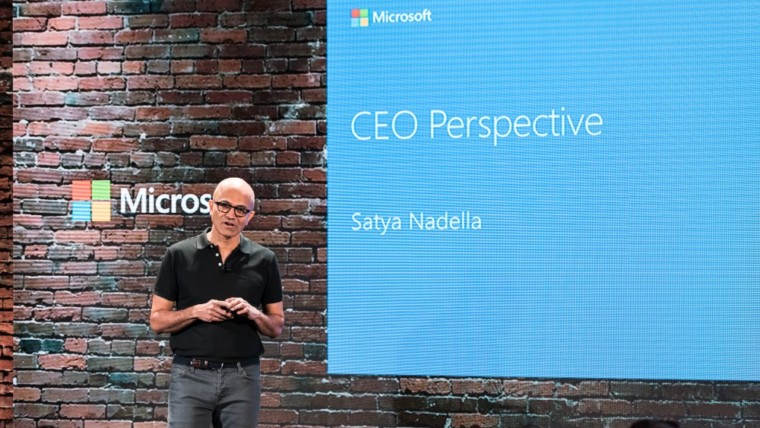From Innovation Leader to Laggard
When CEO Richard Fairbank founded Capital One in the 1990s, he pioneered the practice of selling credit cards directly to consumers. Fairbank had seen firsthand consumers’ desire for credit cards, which at the time were offered mainly to businesses. By the early 2000’s, though, other banks had caught on and offered consumer credit cards, leaving Capital One without a strong brand, identity, or value proposition for new customers. If the one product you’re known for is ubiquitous, how can you stop your customers from leaving for other banks?
For Capital One, the answer was a small laboratory within the larger bank. The group leading this innovative push calls themselves Capital One Labs, and their secret weapon is free coffee.
Introducing a New Mindset to Teams
Capital One Labs describes itself as the “rogue innovation arm” of the bank, slowly but steadily building a practice of human-centered design thinking throughout the company. Lab members have opened a series of “Capital One 360 Cafes,” a hybrid coffee shop/bank branch where Labs employees interview cafe customers to get feedback on new prototypes and ideas. But the cafes are just one part of a larger commitment to innovation. Led by a team of former Stanford d.school teachers and former design consultants from firms like Jump Associates and Continuum, the Labs’ design strategists act as teachers and coaches for internal teams of bank analysts.
Every project begins the same way: they invite the project team to an off-site workshop, during which the strategists spend two weeks coaching the team about how to become customer-centered. Bankers—many of whom are “lifers” at Capital One—are sent to interview customers in branches, run feedback sessions with customers in the office, and then create personas based on customer needs. After the kick-off, the strategists serve as design-thinking coaches, checking in with each project team once a week to suggest human-centered design tools and methods.
Practice Makes Persuasion
While this methodology might be standard in Silicon Valley, it can feel revolutionary inside a large financial institution, so to convince internal skeptics, the Labs team has been building customer-focused success stories across all lines of business in the company for the last three years. For their first few missions, the Labs’ design strategists picked projects that were persistent headaches—products that were viewed as failures despite multiple earlier attempts. The bank analysts on these teams were more disposed to working in a new, human-centered way since their earlier tries had flopped. There was also less pressure on the bank teams, as a successful outcome would be viewed even more positively because of their disastrous beginnings.

In 2011, for example, a Labs team started working on a banking app. The bank knew that it shouldhave one, but all earlier attempts to create an app had failed because bank executives had said “no to the cloud.” The Labs team collected enough customer stories to present a strong case for why customers absolutely needed a banking app, and executives were finally willing to consider approving a new idea for a secure, cloud-based app. It’s now known as the Capital One Wallet, a mobile app that helps customers monitor spending and set up Apple Pay.
More small wins followed. They focused on solving one customer pain point, like raising the monthly limits on mobile deposits. They’d heard from customers that this was a pain point. It wasn’t the biggest problem for the bank, but through empathetic research, they knew that it was definitely a headache for some customers. By starting with many small but strong wins, the Labs gained momentum.
Applying Design Thinking to Customers’ Biggest Pain Point
A few years ago, Fairbank set a new ambitious goal for the bank’s checking accounts: eliminate all customer fees. Though fees are a major source of revenue for banks, customers abhor them, particularly the overdraft fee. The problem stemmed from a disconnect between how customers and the bank viewed the fee. While customers saw the overdraft as a punishment, the bank honestly believed that the overdraft fee was a service —after all, the bank was allowing a customer to spend more money than was actually in their account.
The new bank team began with ethnographic research, and then proceeded through synthesis, ideation, rapid prototyping, testing, and iteration. The business analyst who led the team kept a Post-it with a number on it up on the conference room wall during every meeting he led. The number represented the days since anyone on his team had last interacted with one of the bank’s customers. As the number increased, it served as a clear reminder to get back out to the branches and talk with customers.

Of course, the team hit a few stumbling blocks along the way. Not everyone was enamored of the extra time it took to go out and speak with customers. It was also hard for some bank analysts to let go of the preconceived solutions they had come in with—solutions that were not based on customer insights. And the team faced some resistance from senior VPs. Most VPs had signed off on the new, human-centered design process, but some VPs warned the team that “the right answer to this problem is a revenue-generating answer.”
But the team persevered, and realized that while the majority of customers want to be notified of pending overdrafts, some customers do indeed want to be able to overdraft on expenses like a rent payment, thereby avoiding eviction. The solution was offering a suite of options to replace the overdraft fee, depending on how the customer wanted the bank to help them “mind the gap” between their savings and spending.
Innovation Spreads Through the Organization
Other Labs teams have redesigned processes such as signing up for a checking account, creating an online account, and even the ATM experience. The bank analysts enjoy the new way of working so much that many go on to become design-thinking coaches for other teams.
If a complex financial institution can transform itself with a willingness to actually listen, there’s hope for other industries as well. The lessons Capital One has learned are to encourage teams to talk directly to customers and to adopt a bias towards action and experimentation.
And free coffee never hurts.
Article by Mollie West. Images courtesy of Capital One 360 Cafe.








The Evolutionary Edge
Every Link Ever from Our Newsletter
Why Self-Organizing is So Hard
Welcome to the Era of the Empowered Employee
The Power of “What If?” and “Why Not?”
An Adaptive Approach to the Strategic Planning Process
Why Culture/Market Fit Is More Important than Product/Market Fit
Group Decision Making Model: How to Make Better Decisions as a Team